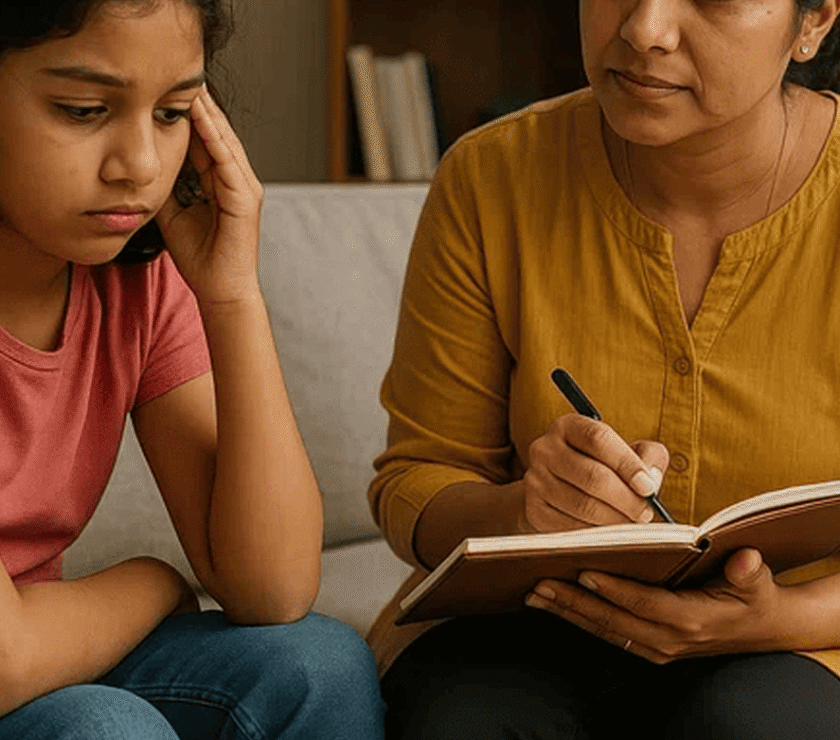What We Know and How to Respond
Over the past few years, screen time among Indian adolescents has shifted from a leisure activity to a potential source of difficulty.
With smartphones, streaming platforms, online gaming, and social media more accessible than ever, many teens are spending hours each day online. While technology offers important benefits—connection, information, creativity—it also carries risks when usage becomes excessive or compulsive.
What the Research shows
- A large survey revealed that 83.2% of secondary school students in India exceed the recommended two hours of screen-device use per day.
- “Problematic Internet Use” affects about 21.5% of Indian school-going adolescents at moderate to severe levels.
- Another study in Gujarat found a smartphone addiction prevalence of 64.6% among adolescents; many of them reported heightened anxiety, depression, or stress linked with their screen habits.
- In terms of norms and concern, 95% of Indian parents report being deeply worried about screen addiction for their children, with large shares also concerned about gaming addiction and exposure to inappropriate content.
These numbers tell us: screen overuse is widespread, and many adolescents are showing signs of harm or distress as a result.
Why It Matters
The impact of excessive screen use is not just about “less time outdoors” or “more late-night scrolling.” Several deeper consequences are being observed:
- Sleep disruption — Late-night screen use (especially before bed) reduces sleep quality and sometimes duration, making it harder to fall asleep or rest properly. Poor sleep then affects mood, attention, and health.
- Mental health strain — Screen overuse correlates with higher rates of anxiety, stress, and even depression among teens. The constant stimulation, fear of missing out (FOMO), social comparison, and sometimes exposure to cyberbullying or negativity feed into these challenges.
- Reduced academic focus / cognitive impact — Excessive screen time can interfere with concentration, study routines, homework, and academic performance. It’s harder to sustain attention when distraction is only a swipe away.
- Social & developmental effects — Spending large chunks of time online can displace in-person interaction, hobbies, physical activity, and other forms of learning and growth. Skills like managing discomfort without immediate reward, or in-person emotional cues, may get less practice.
- Widening inequality — Differences by location, gender, socio-economic status, and parenting style show up in data. Some teens have more freedom (or pressure) to use screens, others fewer means to balance or regulate usage. Rural vs. urban differences, parents’ education or involvement, and family norms around technology all matter.
What Makes Screen Addiction More Likely
From the Indian data, several risk-factors emerge:
- Long duration & bedtime use: using phones or devices late into the night.
- Parental modelling: when parents or caregivers themselves are heavy users of smartphones or gaming, teens are more likely to imitate these habits.
- Psychological distress: teens who report higher levels of stress, anxiety, or mood disturbance are more likely to slip toward compulsive or problematic screen use.
- School and peer environment: bullying, weak school connectedness, peer pressure around gaming or social media can push teens toward more screen engagement.
- Rural vs urban, age and gender: some studies show that younger adolescents (<13 years), boys, and rural teens are at somewhat greater risk in certain settings.
What Can Be Done: Practical Ways Forward
Addressing teen screen addiction demands action at several levels—individual, family, school, and broader systems. Here are suggestions that are relevant in Indian contexts:
- Set clear usage boundaries — Establish norms around screen use—especially around bedtime. Having device-free times (e.g. 30–60 minutes before sleeping) helps. Apps or settings that limit blue-light or dim screens in the evening can aid.
- Promote alternative activities — Encouraging offline hobbies, sports, arts, reading, or any activity a teen enjoys helps balance screen time. Ensuring access to outdoor spaces, or social groups, helps.
- Build digital literacy & awareness — Teens benefit from learning about how social media & apps are designed to capture attention, about the costs of overuse, and how to recognize signs of unhealthy patterns. Schools, NGOs, or community groups can hold workshops or campaigns.
- Parental involvement & role modeling — When caregivers consistently model balanced usage, it sets realistic expectations. Communication about screen habits (not just rules), listening to what teens feel about their own usage, and collaborating on limits rather than imposing them unilaterally makes a difference.
- Improve school environment & curriculum support — Schools can integrate digital wellness into curricula—lessons on mental health, self-regulation, attention training. Also, providing support mechanisms for students who feel overwhelmed (counselors, peer groups) can help reduce turning to screens as escape.
- Sleep hygiene & routine shaping — Encouraging regular sleep-wake schedules, reducing screen use before bed, using “night mode” features, and keeping devices outside the bedroom overnight if possible—all contribute to better sleep and reduced compulsive usage.
- Policy & community efforts — Public health policies or guidelines that address screen time norms, potentially in partnership with educational boards, can raise awareness. Community awareness campaigns, clinics specializing in digital well-being, and mental health services attuned to screen-use issues are increasingly needed. Some Indian cities and institutions are already moving in this direction.
What Can Be Done: Practical Ways Forward
Teen screen addiction doesn’t happen overnight—and it’s rarely one thing. It’s a combination of easy access, psychological needs, peer and school pressures, and sometimes family norms. But because it touches many parts of life—sleep, mood, school, relationships—it’s worth addressing with care and intentionality.
Change isn’t about zero usage; it’s about balance, awareness, and regaining choice. When screen time becomes something you choose (with limits), rather than something you feel compelled to use, the sense of overwhelm begins to ease.
India has many strengths—strong family ties, growing awareness of mental health, and vibrant community networks—that can support healthier relationships with screens for teens. With thoughtful action at home, in schools, and in policy, it’s possible to help adolescents thrive in both digital and real worlds.


